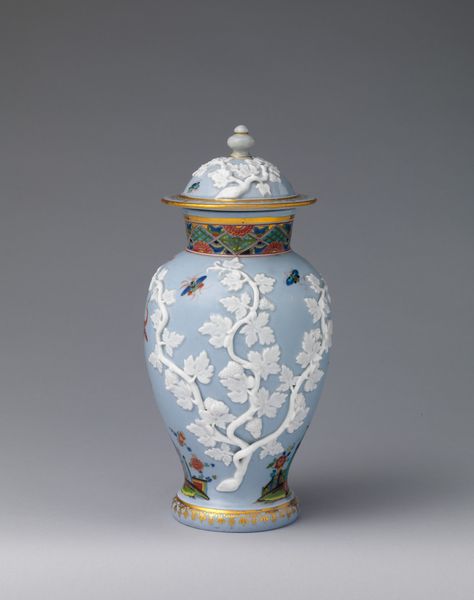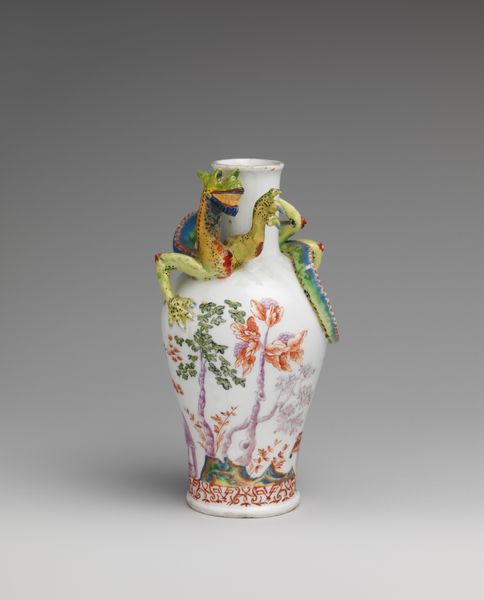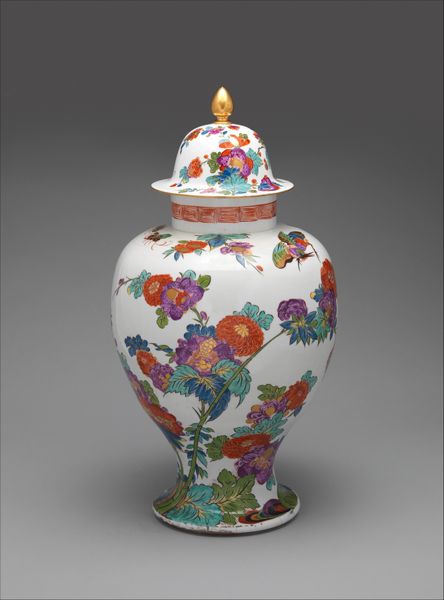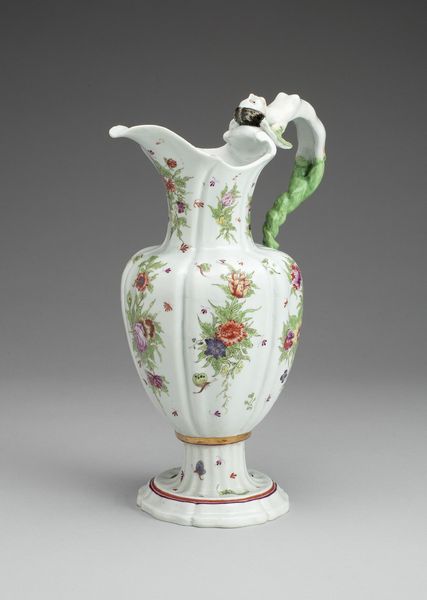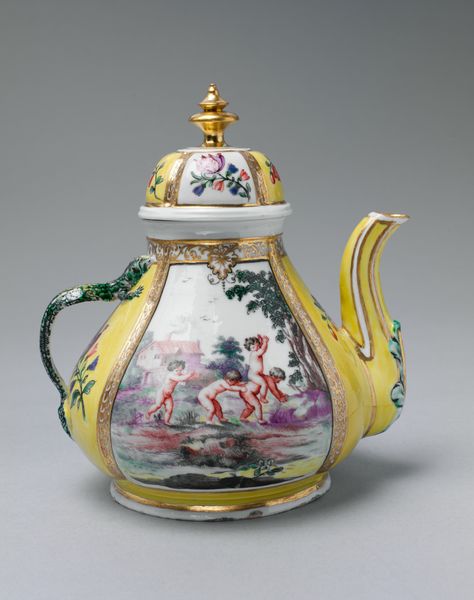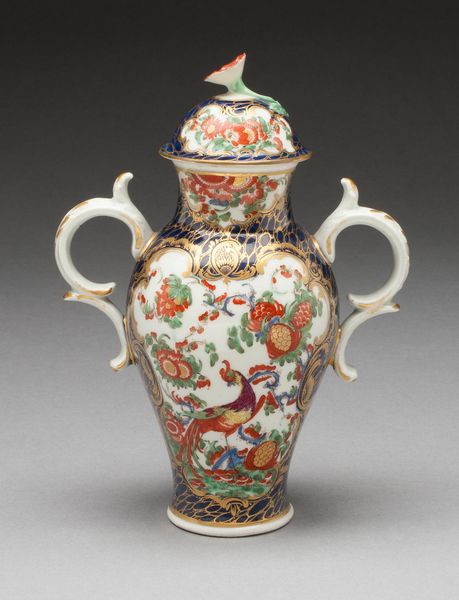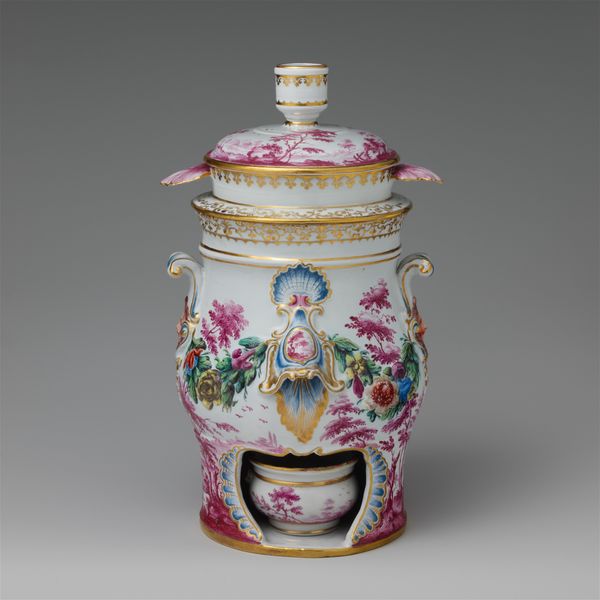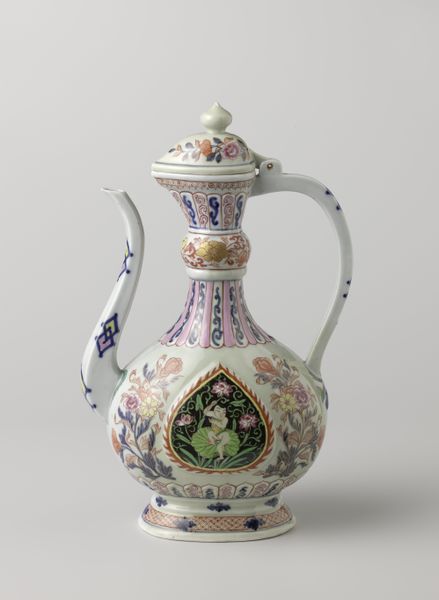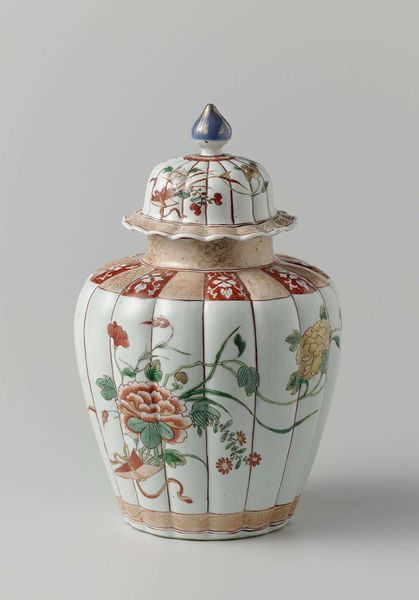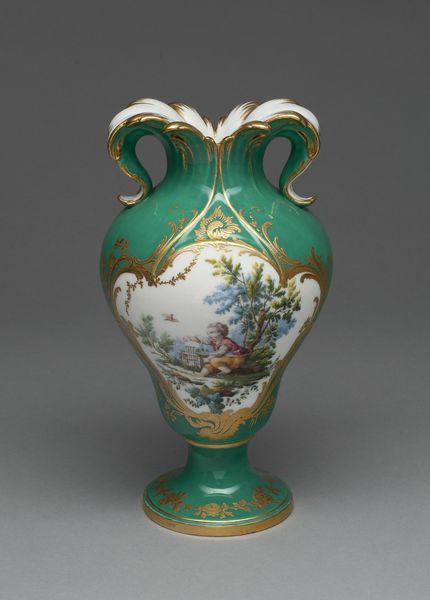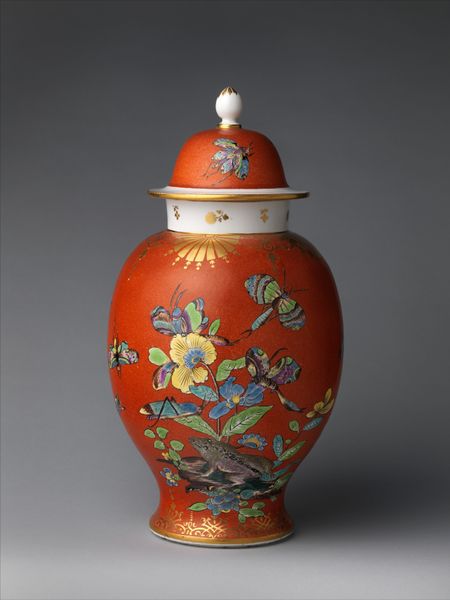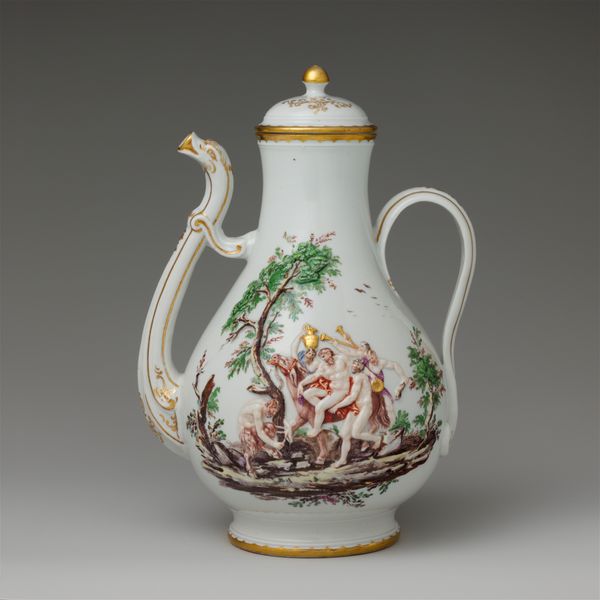
ceramic, porcelain, sculpture
#
ceramic
#
porcelain
#
sculpture
#
ceramic
#
decorative-art
#
rococo
Dimensions: Overall (confirmed): 12 1/2 × 6 × 7 1/2 in. (31.8 × 15.2 × 19.1 cm)
Copyright: Public Domain
Editor: So, here we have the "Fountain with cover and spigot," made between 1740 and 1755 by Mennecy, crafted from porcelain. It's currently housed in the Met. It strikes me as a really extravagant, almost theatrical piece. How do you see this functioning within its historical context? Curator: This piece reflects the Rococo style and the increasing commodification of art within court society of the period. Porcelain, particularly pieces like this, moved beyond purely functional items, becoming statements of wealth and refinement. The "fountain" would likely have been displayed, showcasing its owner’s taste and connection to elite artistic circles. Editor: That makes sense. It’s hard to imagine it being used to actually serve water, given the detail and delicacy. The green dolphin-like figure is such a bizarre choice, how would that be viewed then? Curator: The incorporation of mythological figures alongside naturalistic floral designs encapsulates the Rococo aesthetic. These elaborate fountains became conversation pieces. The bizarre aesthetic challenges what constitutes the "natural", pushing the bounds of design. We might also consider how these images helped normalize ideas about French imperial power in domestic life. Were objects like these solely status symbols, or were they actively involved in conveying political and social meanings? Editor: So, more than just decorations; they played a part in larger narratives of power and social status? I hadn't considered that. Curator: Exactly! By examining these objects through the lens of cultural history, we see art not as isolated creations, but as active agents within complex societal structures. The decorative arts became another way to display prestige. Editor: It definitely provides a different perspective on what seems like just a pretty porcelain fountain. Curator: Precisely, every object tells a story of the time it occupied.
Comments
No comments
Be the first to comment and join the conversation on the ultimate creative platform.
